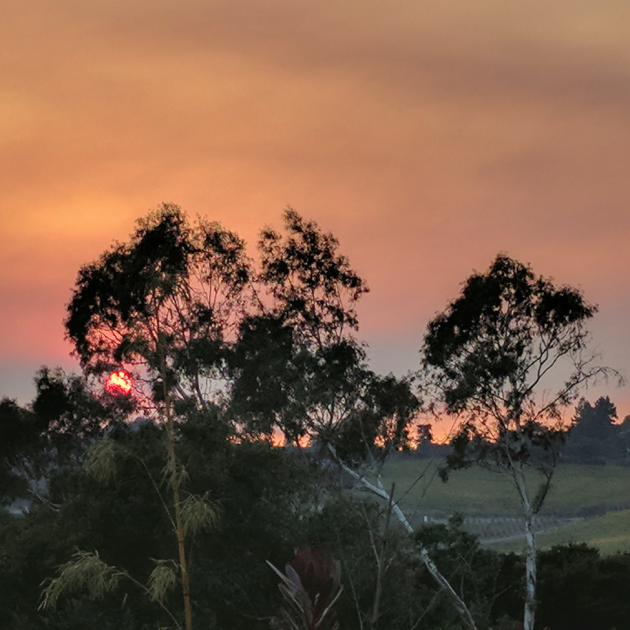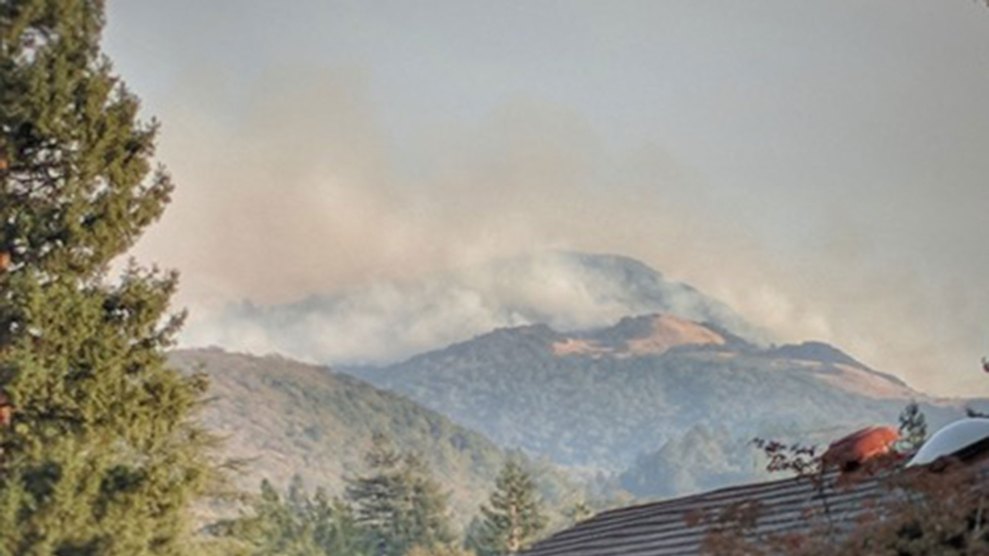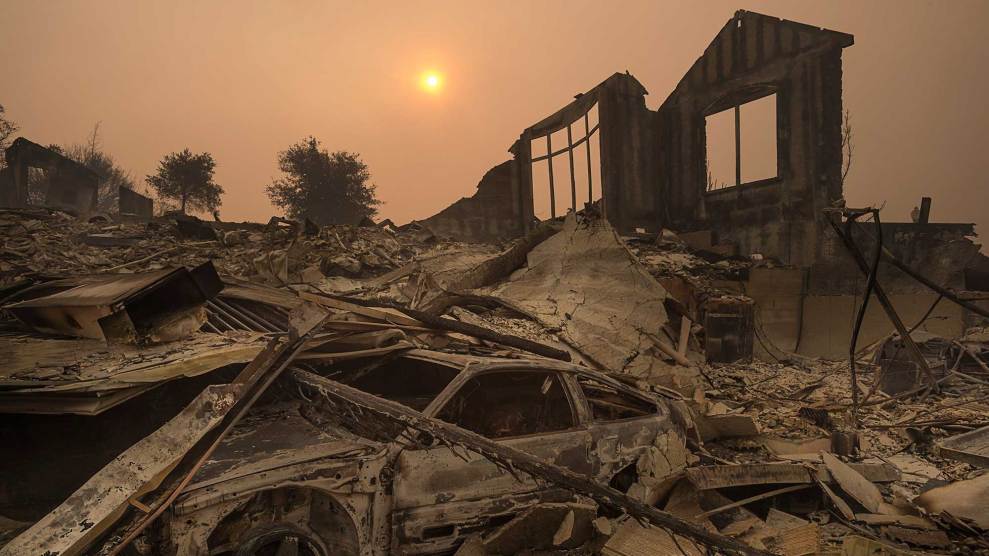While Kevin’s on vacation, we’ve invited other Mother Jones writers to contribute posts.
I packed more bags yesterday, worried about the red flag warnings, which forecast wind gusts to 50mph in the fire zones overnight. Aside from Yahweh, the cat, who packed himself in a Whole Foods bag, it was oddly difficult to choose what to take. My thinking didn’t feel one hundred percent rational and I wasn’t sure I’d appreciate my choices later—arrowhead collection or photos?—if it came to that.
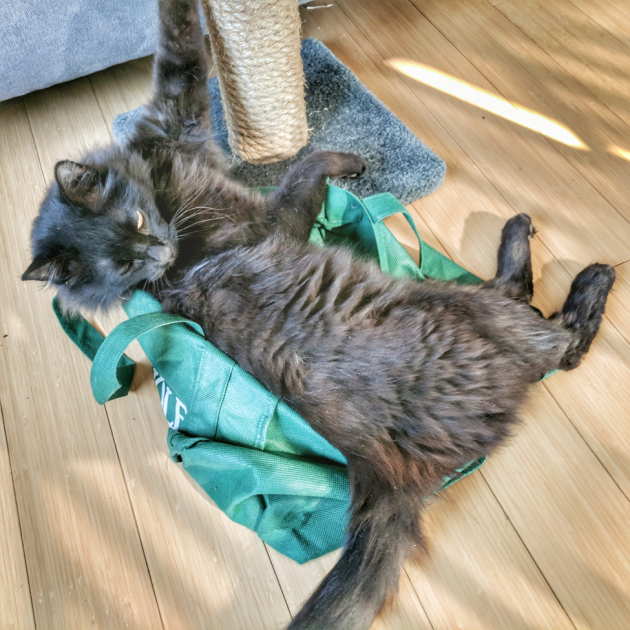
Yahweh the black cat.
Julia Whitty
I also felt sort of guilty that I had so much time to ponder choices when so many others couldn’t. And people weren’t the only ones running for their lives. Reports of wild animals escaping the fires and wandering through neighborhoods, traumatized and thirsty, led the Forest Service to suggest that people leave out buckets of water. I did. A friend also told me she heard coyotes singing outside her house for the first time ever the other night, and she’s lived in the same house for twenty-one years. It was eerie, she said, and sad.
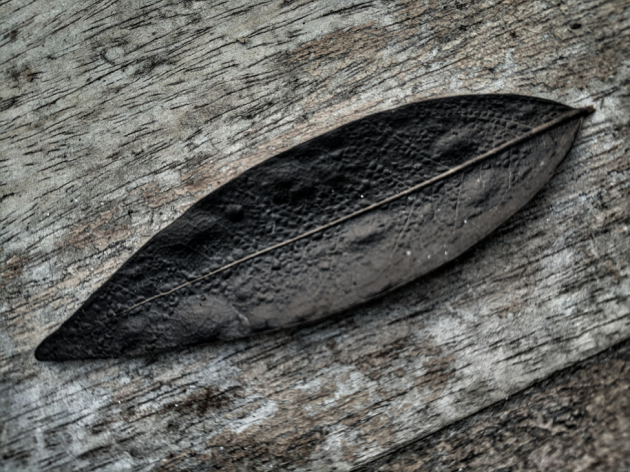
One of the many burnt eucalyptus leaves in flight on the wind.
Julia Whitty
A lot of people fled for the coast and I went out this morning to see what it would be like as an evacuation place. All the Sonoma Coast State Park campgrounds were full. Some of the people lucky enough to find a camping spot told me they came out to escape the smoke; they had asthma or COPD. Others were escaping the fires. Some couldn’t find camping spaces and slept in their cars. Sadly most of these evacuees will have to vacate the campgrounds tomorrow when the people who booked them for a weekend holiday will arrive. That seems weird to me. Maybe the vacationers could donate their camping spots to the people in need for a weekend or three?
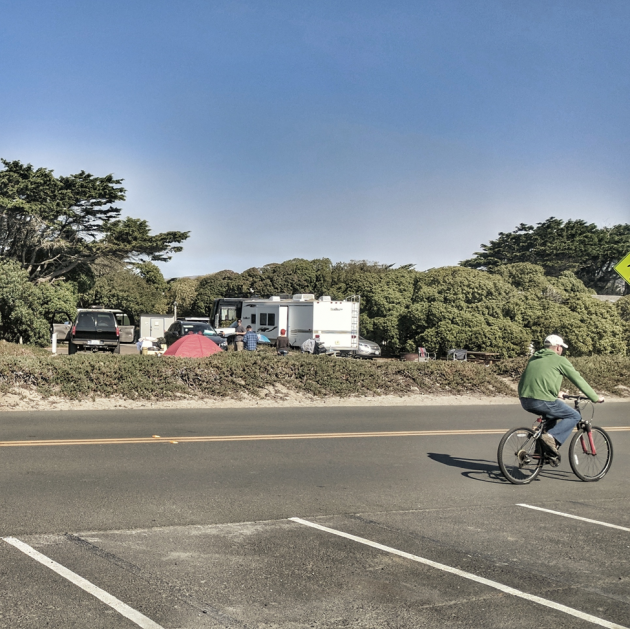
Doran Beach campground.
Julia Whitty
Also out at the coast was a seemingly abnormally high numbers of birds. Lots of hawks and falcons, ravens. The air was much clearer. It would be a great place to fly to, albeit potentially strange hunting grounds. This great blue heron—normally an extremely skittish bird—was apparently hungry enough that I could walk right up to him or her and leisurely take photos.
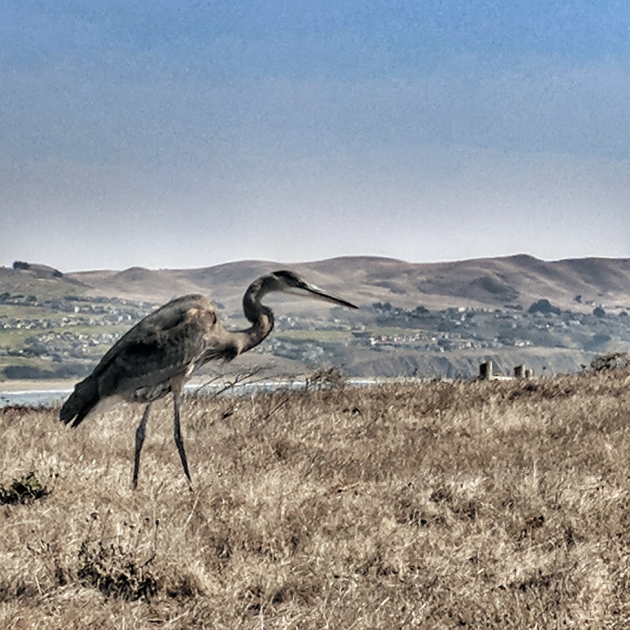
A great blue heron.
Julia Whitty
Thankfully the high winds didn’t materialize last night, at least not enough for the fires to blow up into another firestorm. The longer term forecast suggests rain a week from today. Let’s hope. Rain, a lot of it, is the only thing that’s going to extinguish these infernos.
